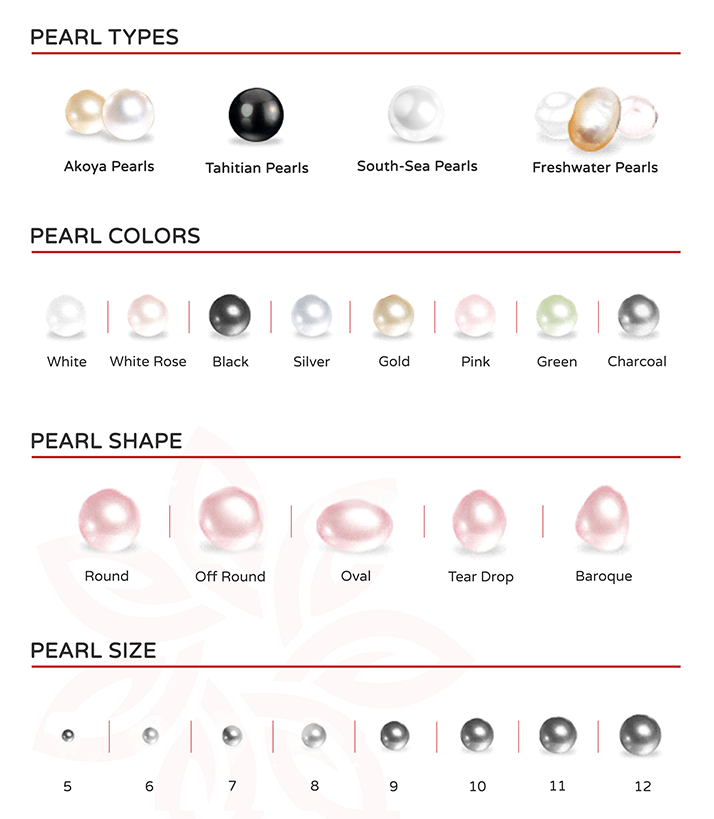


 Virani Jewellery
Virani Jewellery

 Jewellery Care Guide
Jewellery Care Guide

 Metal Guide
Metal Guide

 Ring Size Guide
Ring Size Guide

 Ring Setting Guide
Ring Setting Guide

 Engagement Rings
Engagement Rings

 Wedding Rings
Wedding Rings

 Earrings Guide
Earrings Guide

 Pendant and Necklace Guide
Pendant and Necklace Guide

 Jewellery Types
Jewellery Types

 History of Jewellery
History of Jewellery

 Pearl Guide
Pearl Guide
When you order your precious diamond jewellery either online at Viranigems.com or through one of our offline Virani Galleries, you set in motion a wonderful chain reaction that our passionate designers and skilled craftsmen are early waiting to begin.
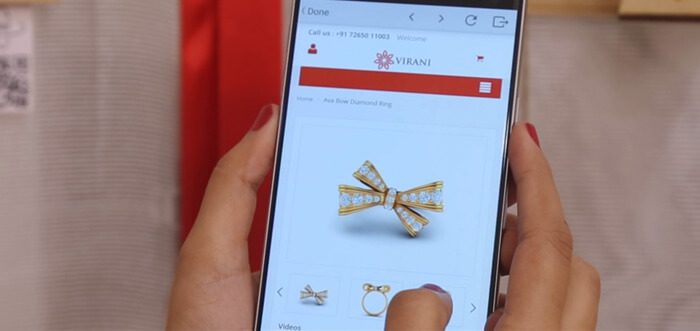
Once we receive your order, one of our jewellery consultants personally calls you to welcome you to Virani and to go over your order in case you had any questions about your jewellery. At that point, your order goes through our comprehensive ERP system and a job card of your jewellery is printed, which keeps track of all the details of your jewellery throughout the entire manufacturing process.
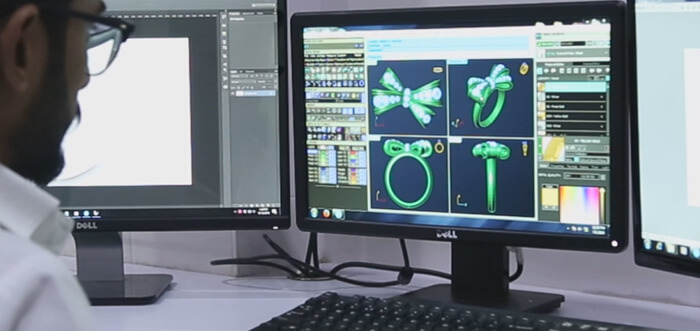
If a custom design request is made, our skilled designers bring your design ideas to life using a 3D CAD modelling software and send you 360 degree videos and photos of your design for your approval. For all of our timeless designs available online at Viranigems.com, a 3D model is first printed to create a rubber mold. Once the hollow rubber mold is created, wax is injected inside the rubber mold.
After removing the soft wax piece from the rubber mold it is carefully reviewed before a wax tree is made. Since all or our designs are offered in rose, white and yellow gold, as well as in 14K or 18K, different wax trees are created for jewellery items with different gold specifications.
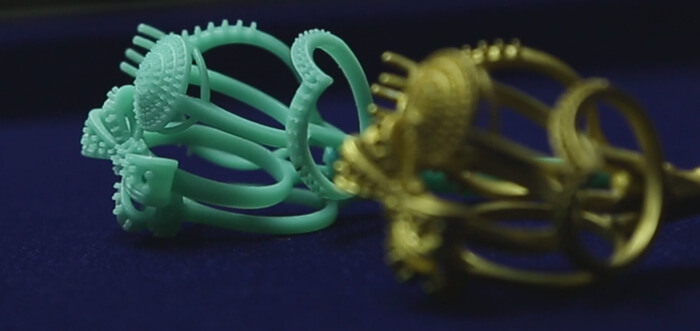
The wax tree is then fixed inside a flask which goes for casting. A pure gold tree is casted in the exact shape of the wax tree. Your jewellery is then separated from the tree and it moves on to the next sets of delicate processes which include filing, pre polishing, ultrasonic cleaning, stone setting, final polishing and then finally Rhodium plating.
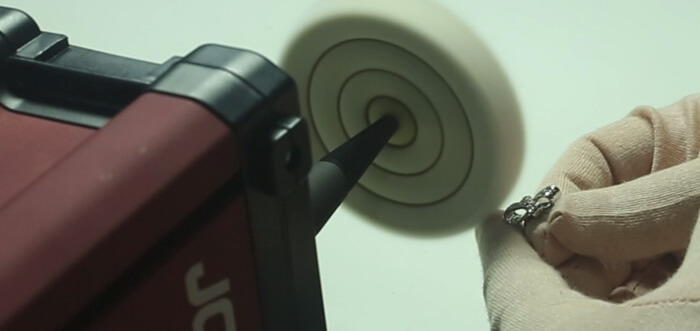
After passing our multiple quality control checks, your precious jewellery is sent out for certification form one of the most respected gemmological laboratories of the world.
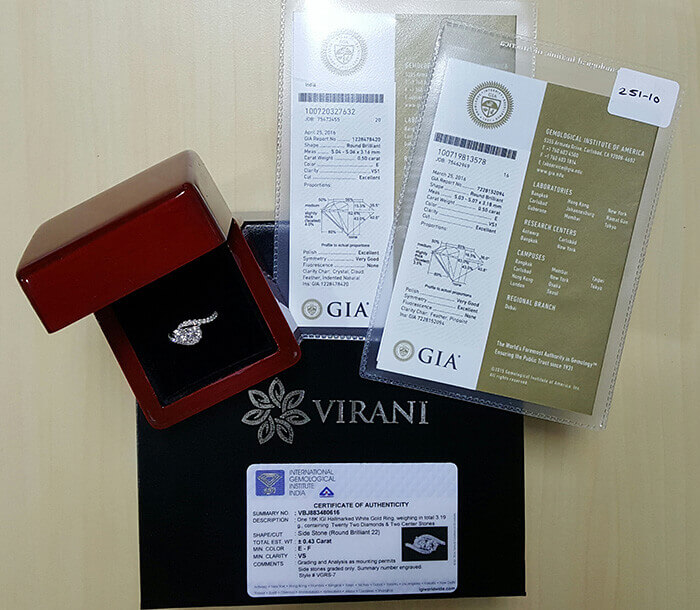
Your fully certified jewellery is then packed and shipped using our trusted logistics partners.
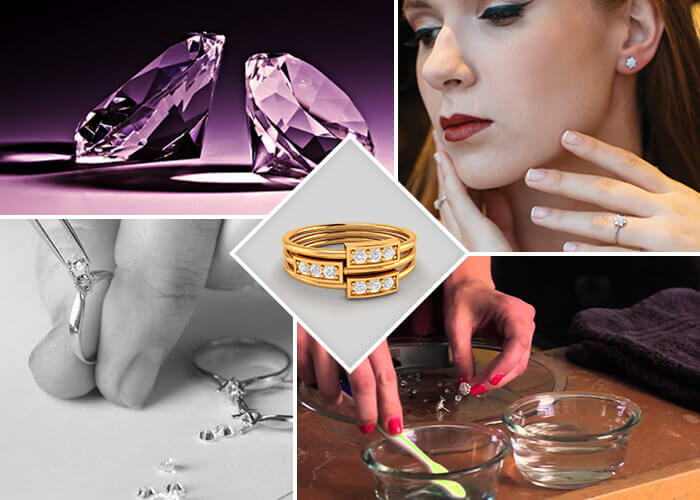
A little care and some timely attention would go a long way in ensuring that the sparkle of your love, and the fire of emotions stay strong – both in your hearts and on your finger.
Here are a few simple ways to care for your precious diamond jewellery:
While diamonds are really, really tough to crack (they are the hardest substance known to man), but losing their sheen and shine is definitely possible. Even more so with a solitaire, as it is usually mounted with prongs high above the metal shank. It pays to be careful when working with everyday home cleaners, cooking oils, grease and such other household materials. Acids of any kind are to be avoided like the plague, as these can significantly corrode the gold / silver / platinum.
Twisting your sparkling solitaire ring around in your finger, using it to tap on a glass or metal desk, and such other activities are a definite no, no! If you are a fitness fanatic and do frequent weight training at the gym, you absolutely must keep your solitaire ring at home or keep it safe inside your locker before you start your workout. The heavy metal weights might scratch the metal, or in worst cases, loosen your solitaire and cause it to fall off.
There’s nothing like a good, mild bath to keep your solitaire ring sparkling like new. The fiery brilliance of the diamond is sure to be enhanced with period care of the setting and the diamond. While nothing beats a visit to your jeweler once or twice a year for routine maintenance, you can do a lot to take care of your ring at home. A solution of one-part ammonia in six parts of water would be an ideal bath for your ring. Keep it soaked for a half hour, then brush it lightly with the softest possible brush. Lastly, wipe it down completely with a micro-fiber or soft silk cloth. Lo and behold! Your solitaire is as good as new again!
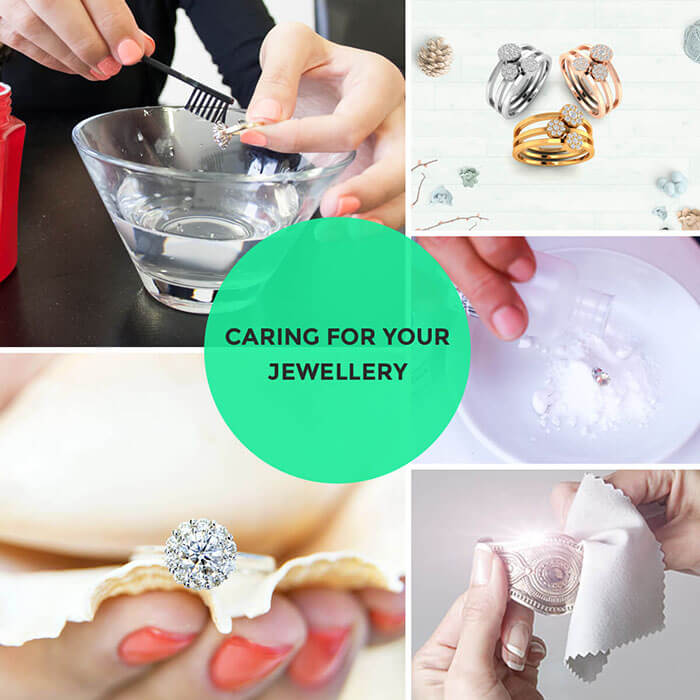
If by any chance, your diamond has come loose in its setting, take it off and visit your jeweler at the earliest. Chances are one of its holding prongs has broken off or is eroded, causing the solitaire to become loose. Don’t ever try to repair it at home. You can be sure to lose your diamond. Only a jeweler, preferably the one who made the ring in the first place, can truly set it back accurately.
With just a few small precautions, you can enjoy the shine of your solitaire, and your partner’s love for a long, long time.
When we think of jewellery, the first image that comes to mind is a shimmering gold ring with a sparkling diamond or a classy gold pendant or earrings studded with precious stones or diamonds. Gold seems to be a prominent metal in all jewellery items across cultures and countries. However, not all jewellery items are made of gold. There are several other metals and metal alloys that go into the making of jewellery as well.
Ever since humans learnt how to forge metals, they have been using different metals to make jewellery items. At different times iron, copper, brass, silver, gold and more recently, platinum have been in vogue for creating jewellery.
Interesting Trivia: The purest form of gold that has been achieved till date is 999.999, refined in 1957 by the Perth Mint. This is higher than the normally accepted purity standard of 24K gold, which is actually 999.



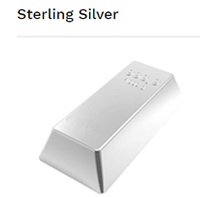
The three metals that are mainly used in precious jewellery today are silver, gold and platinum. As we go from Silver to Gold and from Gold to Platinum, their value increases due to their rarity.
Among these, silver, which has been around for more than 5000 years, is the most abundant, and also perhaps, the most widely used. In its purest form, this white metal is marked to be at 999 purity. However, the best jewellery in silver is usually considered to be in Sterling Silver, or 92.5 purity. This effectively means that there is 92.5 percent of silver in the jewellery, while the remaining 7.5 percent is other alloy added to increase the durability and hardness of silver.
Similar to silver, different metals such as copper or palladium are commonly added to gold to create rose or white gold. Copper tends to give gold a slightly reddish tinge. Silver and palladium are also used for making white gold jewelry. Silver is mainly in the form of Sterling Silver or 92.5 when casted into jewellery. However, gold is used in more than one purity percentage for making of jewellery as it is far more precious than silver.
Here are some of the most commonly used purity levels:
The best way to assess the purity of gold is to look for the “hallmark” on the gold bar or a jewellery item made with gold. For every karat purity level listed above, the gold would be marked accordingly.
Although solid gold jewellery and gold plated jewellery look almost identical in terms of their appearance, there is a significant difference both in their price and value. The gold plating usually utilizes a liquid form of gold to create a thin layer of gold on a piece of jewellery made of any other metal to give the jewellery item the look of gold. Once again, it is 18 K gold plating that is most commonly used.

Traditionally, iron, copper, silver and gold were the key metals that were being used for jewellery manufacturing. Among these, iron and copper and to some extent silver, were jewellery metals that were widely utilized due to their affordability. Gold, on the other hand, has been in demand mainly as a luxury metal due to its premium value. In recent years though, another white metal – platinum – has risen to prominence as the metal of choice for precious and high end jewellery
Platinum has been around for several centuries. However, due to its rarity in nature and high melting point of 3221.6 degrees Fahrenheit, its use in jewellery was almost impossible until the 19th century.
Interesting Trivia: The ancient Egyptians knew how to melt platinum – they used it in combination with gold for jewellery. However, when the Spanish re-discovered platinum in South America in the 17th century, they discarded it since they were not able to not melt it using their techniques available at that time. King Louis XVI, on the other hand, declared platinum as the one metal fit for use by royalty!
Only around the turn of the 20th century did scientists find a way to achieve the high temperatures necessary to make platinum malleable. Once that happened,
With technological advancements, scientists were finally able to achieve high temperatures necessary to melt platinum in the 20th century. Since then, this beautiful white metal took off and people around the world started seeking jewellery made from platinum.
Perhaps the most attractive feature of platinum is its ability to retain its shine and luster for life. It does not get affected by the atmosphere and it is extremely strong. While silver and gold tend to dull over time, platinum manages to keep its original sheen for years. Furthermore, platinum far exceeds gold in weight.
In terms of metal purity, platinum jewellery is graded slightly differently than gold jewellery. Unlike gold, which has multiple purity levels ranging from 24 karat to 10 karat, platinum does not have such classification. Most jewellery items made from platinum contains between 85 percent and 97 percent of platinum.
Metals that are alloyed with platinum for making of jewellery include Palladium, Iridium, Copper and Ruthenium. In terms of marking and identification, most platinum jewellery come marked with the certain universally accepted symbols – PLATINUM, PLAT or Pt. Often, it is succeeded by numbers – 999, 950, 900, or 850 – indicating the purity of the platinum used in the jewellery.
Through its history, platinum has been used for many different jewellery and non-jewellery applications. Even today, it has many industrial and military uses. However, platinum is mainly used for making jewellery items such as wedding bands and engagement rings. Platinum love bands, studded with real diamonds are highly in fashion these days.
Hard Fact: As a rare metal, platinum is very tough. And therefore, many people prefer it over gold. Compared to approximately 2000 tons of gold mined every year, only around 150 tons of platinum is mined. This makes platinum rarer and more expensive compared to gold.
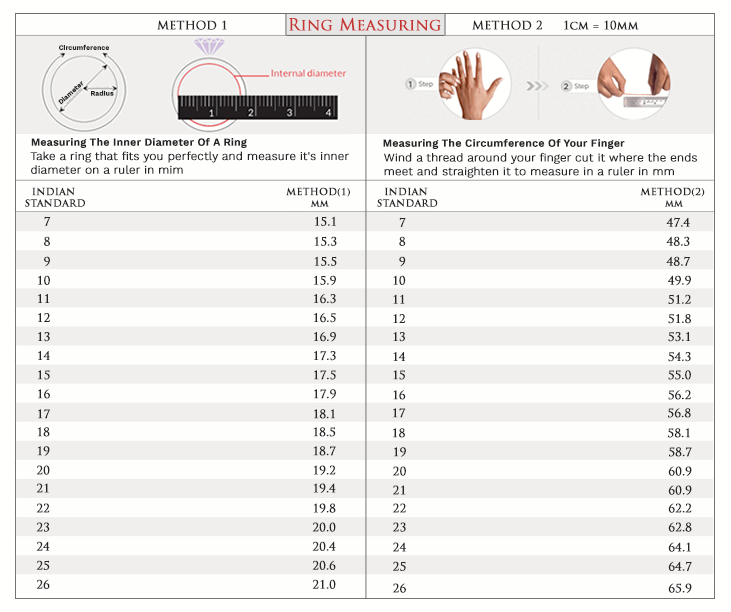
Every piece of jewellery that is studded with diamonds or gemstones, whether it's hand-made or crafted using advanced CNC machines, requires immense attention to detail when it comes to the Setting. The Setting not only determines the aesthetic appearance of the jewellery, but it also ensures that the studded stones do not fall off.
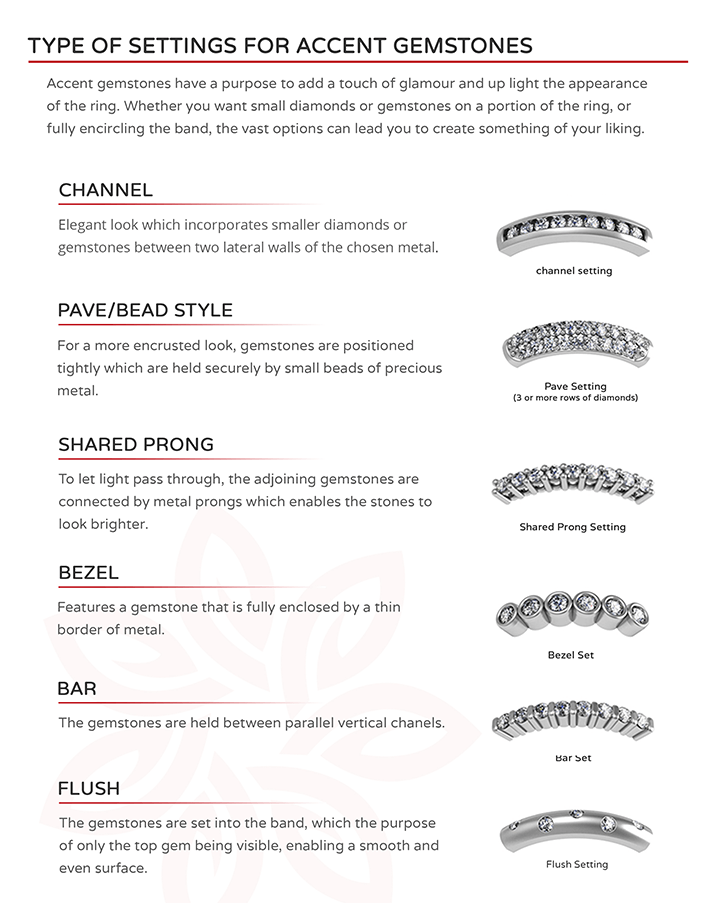
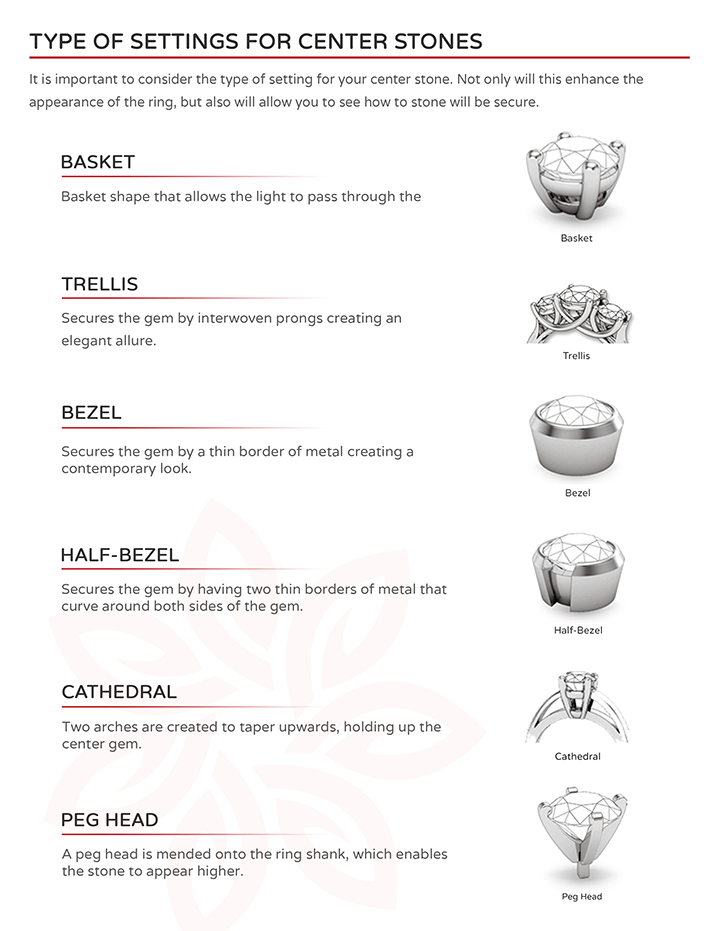
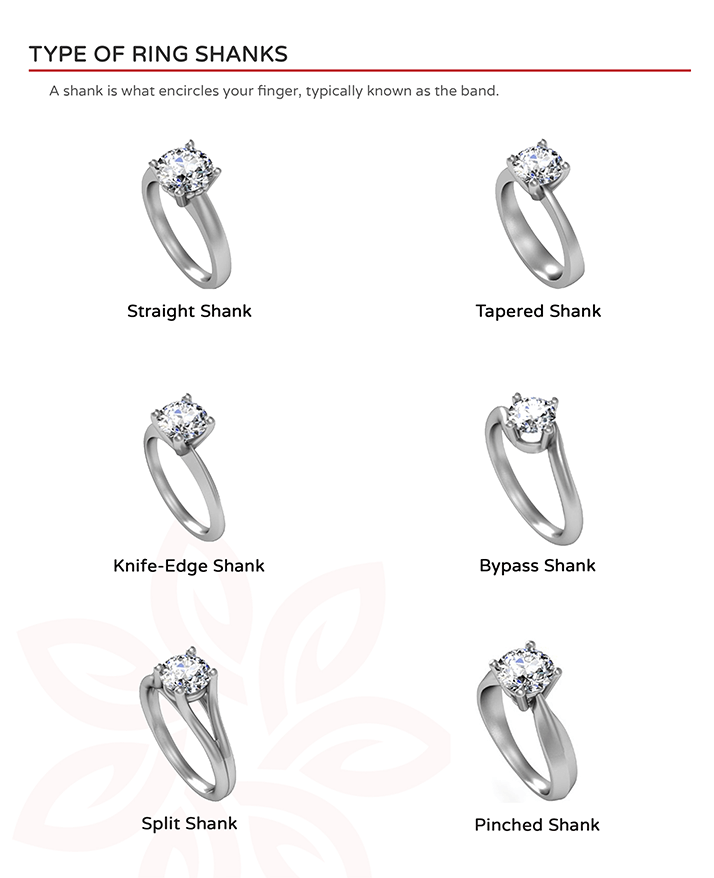
In order to fully understand and appreciate the craftsmanship that goes into the making of studded jewellery, it is definitely necessary to understand the different kinds of settings that are used to set the stones into the metal. At the same time, knowledge of the setting also allows buyers to better assess the value of their jewellery piece.
There are of course several other settings that are in use around the world. However, these are the more popular and in demand settings.
Interesting Trivia: One particular setting is called “The Cathedral Setting” because of its appearance of raised arches of a church or a cathedral. It is a fantastic setting for an engagement or wedding ring as it gives a divine look to the ring. But, it is also quite delicate and prone to snagging and bending because of the diamond’s height above the shank of the ring.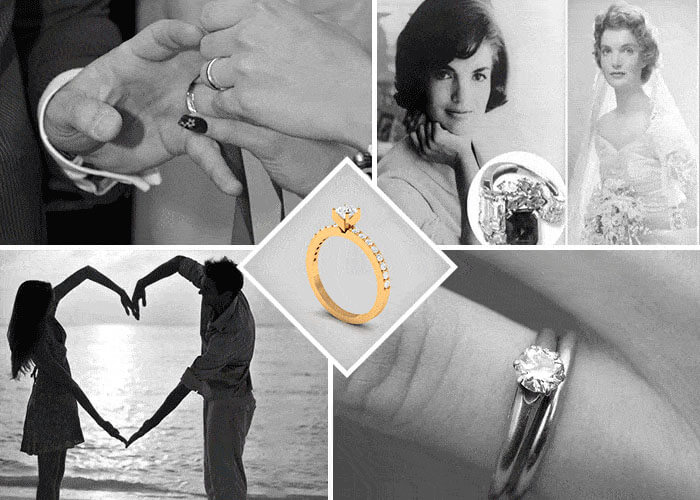
A romantic guy, dressed like a gentleman, goes down on one knee in front of a beautiful woman in a long gown. With his right hand, he takes something out of the inside left pocket of his jacket. As his lady skips a heartbeat in wonder and surprise, he opens the small box and offers her a beautiful gold ring with a sparkling solitaire diamond set on top, and asks her, “Will you marry me, my love?”
Who doesn’t dream of this romantic proposal?
Interesting Trivia: The concept of modern “Engagement Ring”, which has become an expression of love and commitment of marriage worldwide, was born in Europe in the 15th century.
Let’s look at some interesting historical facts about the engagement ring. While ring have been in existence and use for thousands of years (they have been discovered in Egyptian as well as Sumerian tombs), the ancient civilizations never used the rings as expressions or symbols of love. They were mainly used as adornments to be worn to show off status, stature and taste.
So when exactly did the concept of an engagement ring, that sets it apart from any other ring, come into existence? If we trace the roots of the engagement ring back to the third century BC, we can see that Egyptians were known to exchange rings made of gold or silver. They wore them on the ring finger of the left hand which represented marriage and symbolized love as they believed that the vein of that particular finger connected directly with the heart.
The first certified and recorded mention of a man betrothing a woman for marriage goes back to 1477 when Archduke Maximilian of Austria presented a special engagement ring crafted with diamonds to Mary of Burgundy.
The custom of presenting a diamond engagement ring as an expression of love and commitment became popular from then on, though not all men presented diamond rings to their ladies back in the day. It was only after abundant supplies of diamonds were found, first in Brazil and later on in South Africa, that diamond engagement ring became popular. From simple flat rings at the outset, design artists soon created highly artistic multi-diamond rings with a solitaire in the centre that caught the fancy of lovers.
After 1950s, the concept of diamond engagement ring became even more popular worldwide after De Beer’s launched their famous “A Diamond is Forever” marketing campaign.
Hard Fact: Rings are a part of both the engagement and the wedding. However, the rings in both these symbolic celebrations of love differ. While a wedding band is usually a plain metal band (gold, silver or platinum), an engagement ring is a more elaborate affair with either a solitaire or a bigger diamond in the centre with smaller stones set around it.

As soon as we think of weddings, a few images come to mind right away – a bride resplendent in a lovely gown, the groom in a made to measure suit, lots of music, dancing and celebrations with friends and family. But among all of these images, the one that stands out the most would undoubtedly be the moment when the couple exchanges their wedding rings with each other.Be it simple or be it elaborate, the actual wedding ceremony and more specifically, the exchange of the wedding rings forms the centre of most weddings across cultures worldwide. ”
Interesting Trivia: The wedding band or ring is a circle to signify a relation without a start or an end – an eternal love. Marriage too is believed to be an eternal relation; in India it is believed that marriage ties a couple together for seven lives. The empty part in the centre also has its own meaning – it is the entry way or gate to each other’s hearts.
So how did this simple piece of jewellery become such an important symbol of love and commitment?
The tradition of rings as a piece of jewellery has been around since times immemorial. The earliest rings were most probably made of simple plant stems or tree bark twisted into a ring to wear on a finger. The credit for presenting a ring at a social event perhaps goes to the Egyptians. The first metal rings were of course made by the Egyptians, but it was the Romans who really turned them into symbolic pieces of jewellery items. A band on the ring finger of the left hand meant the wearer is married.
Initially, only women were required to wear a wedding ring or band. Men started wearing wedding bands only in the last century. It was actually a war, World War II, which got men to start wearing wedding rings. Men’s wedding rings came into existence for the soldiers fighting in a far off continent as a reminder of the love they had left behind.
Interesting Trivia: While the Egyptians, the Romans, and the Western civilizations started the tradition of exchanging wedding bands ages ago, the more traditional eastern countries have also accepted this trend in recent decades.
If you are wondering how a wedding ring differs from an engagement ring, there are some subtle differences that you can look for to tell which one is which. An engagement or a proposal ring is typically a precious metal or diamond studded ring with a solitaire in the centre. The wedding band, on the other hand, is a simple precious metal band. Some brides prefer a matching wedding band with their solitaire engagement ring, a “Bridal Set”.
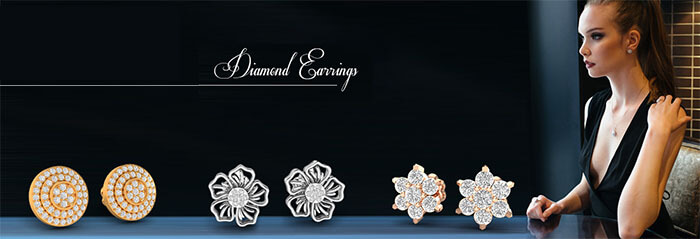
The name "Earring" came into existence as a combination of the body part where it is worn and the original jewellery item that it was derived from – the ring. The ancient earrings were actually large sized thin rings with open ends.
Interesting Trivia: The church officially banned piercing of ears and wearing earrings in the 13th century as they believed that the human body was the image of God and it shall not be altered from its natural God given shape. However, those outside the law, continued to pierce their ears and wear earrings.
In certain European societies, the only son in the family wore an earring in the right ear. The sons of a single mother, on the other hand, wore a single earring in the left ear. And if by any chance, a man wore earrings in both ears, he would get extra protection as the earrings would signify that he was the last man in his family line.
While the trend of men wearing earrings continues even today, it has reduced quite drastically. Today, earrings have become fashion and style statements mainly for women. Many different styles of earrings have been developed over the years, ranging from the simple gold bead studs, to solitaire diamond studs and long, designer dangling earrings.
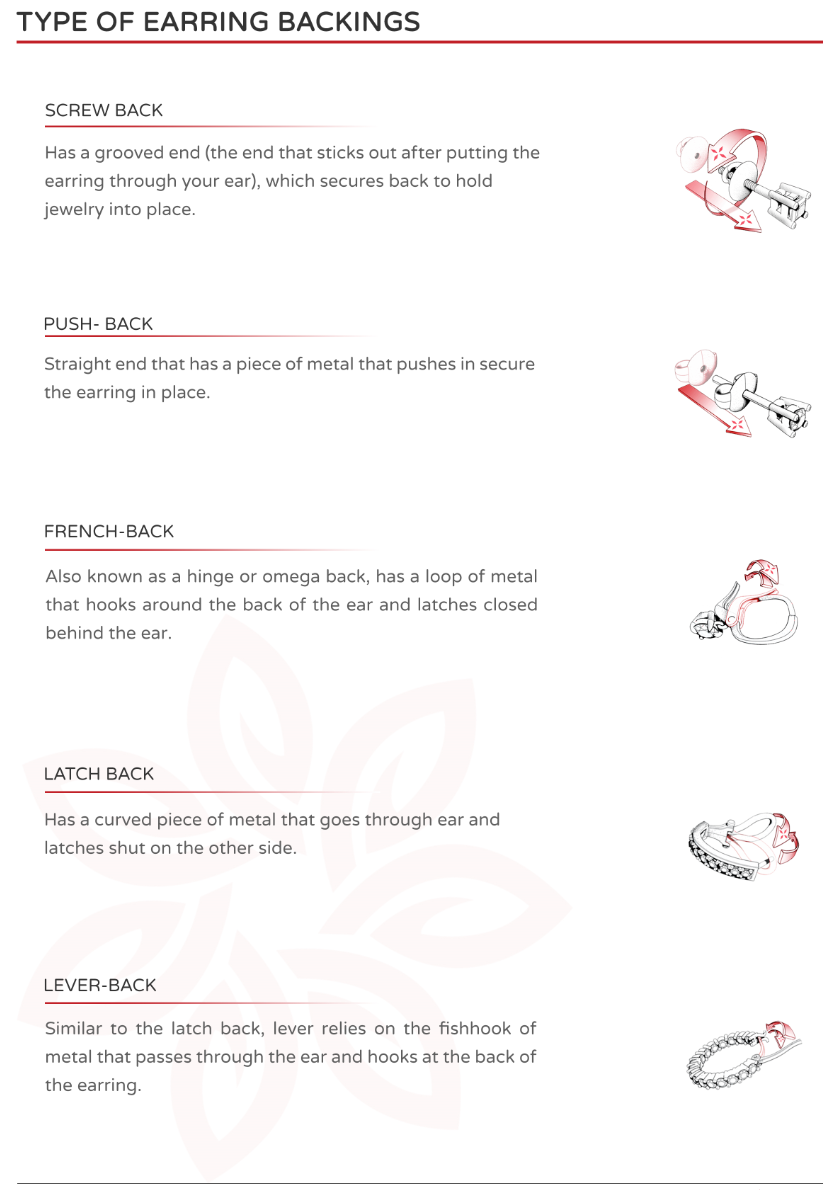
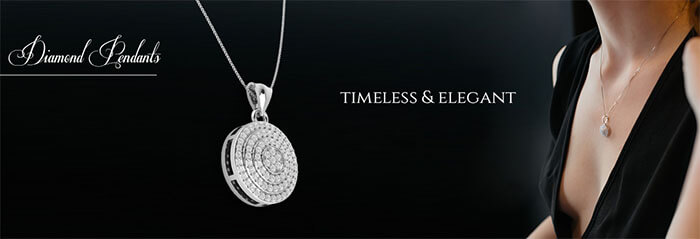
Of all the jewellery in the world, the beauty and allure of a perfectly designed and crafted pendant, swinging around the beautiful neck of a lady is the stuff poetry is made of. Pendants find their origins among the very earliest of jewellery, right alongside rings and earrings. They are also the precursors to necklaces and other types of neck jewellery. While they have been around for ages, the nomenclature – pendant – came into existence relatively recently. The Latin word meaning is where This beautiful ornament finds its name from the Latin word “pendere” which means “to hang down”.
The popularity of pendants is because of their flexibility to match any ensemble and occasion. Additionally, they come in many shapes and sizes, from extra light and affordable to ultra-heavy and extremely expensive. Furthermore, there is a whole range of pendants that come with matching earrings, and in many cases, matching rings as well. In other words, a full “Pendant Set” is the complete jewellery package!
Hard Fact: While most pendants are worn on chains, there are also necklace-pendants that are parts of intricate necklaces. These pendants are as elaborate as the necklace they are part of, yet they stand apart from the necklace as they hang below the main body of the necklace.
Even among pendants, there are many different styles. And depending on your mood, choice and pocket depth, you can select any of the following types.
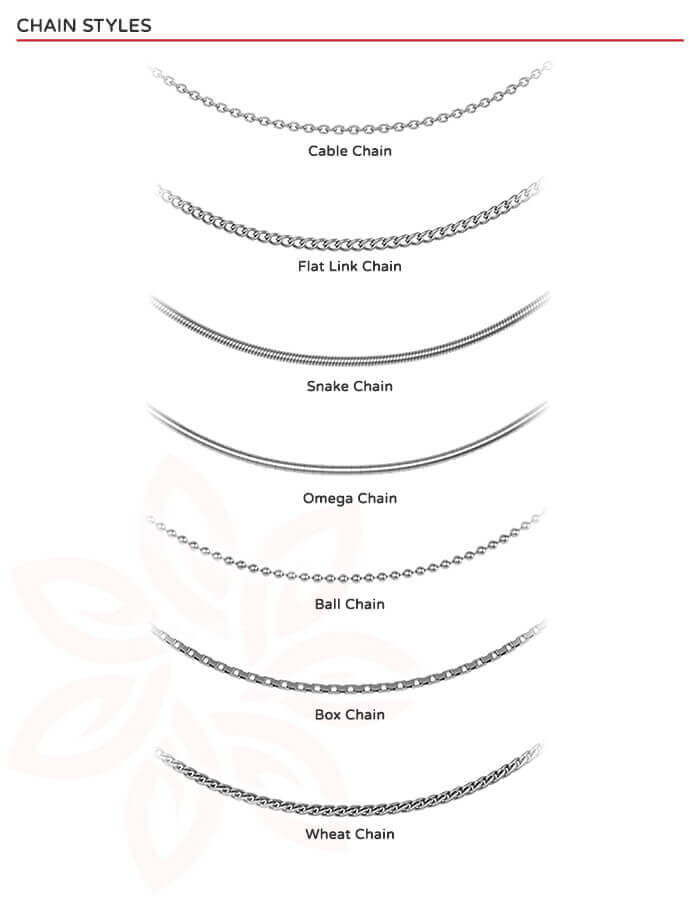
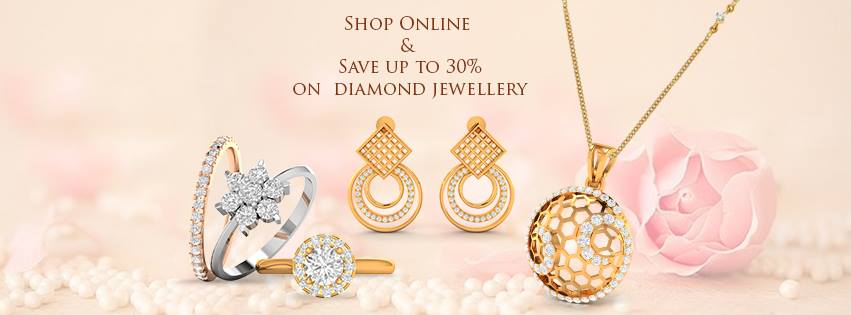
The infinite world of jewellery has hundreds of thousands of designs, across countless jewellery types. Even before humans learn to wear clothes, they have been wearing jewellery as a symbol of status, wealth, fashion and most recently as an expression of love and commitment. From simple rings (for both girls and guys) to elaborate necklaces, from tiny ear studs to highly exotic body jewellery, adornments have come a long way from their origins thousands of years ago.
Interesting Trivia: Out of every 100 pieces of jewellery sold worldwide, rings perhaps take the lion’s share at 70-75 pieces.
If we talk about jewellery in general, the first thing that comes to mind is a RING. Yes, the ring worn on the fingers of either hand is the most common and the most popular jewellery item around the world. People of almost every country, culture and religion wear rings in some of the other form. Rings vary from simple metal bands of gold, silver or platinum to the more elaborate creations – rings set with solitaires, intricately set semi-precious or precious stones or diamonds, filigreed large rings, cocktail or party rings, and many more. The list is virtually endless.
Interesting Trivia: Women in the state of Maharashtra in India wear a different type of ring. Popularly known as a “Vichchoo” or scorpion ring, it is worn in the first finger of either leg and is usually a large, elaborately hand-crafted or casted ring.
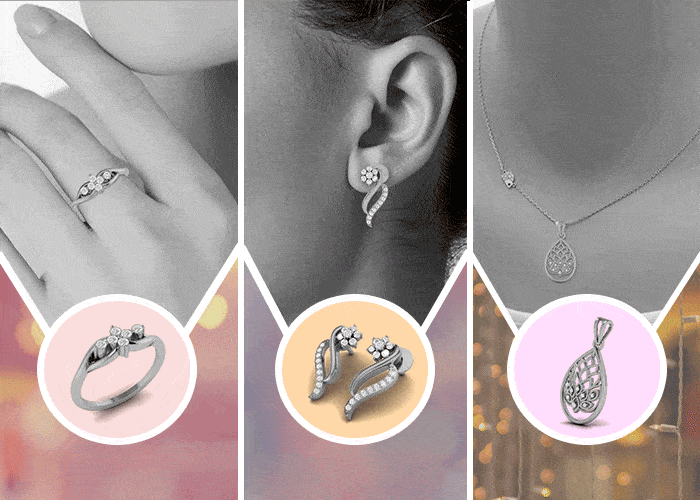
The next most popular jewellery item on the rather long list of jewellery types would be EARRINGS. Just like rings, these ear adornments are also designed to be varied in style and size. Additionally, just like rings, earrings are also worn by both men and women. The range of styles and designs that make up this particular item of jewellery are simply staggering. Single diamond studs, multi-diamond studs, simple loops earrings, danglers are all members of the range of earrings that are forever in fashion.
As we move down the popularity categories of jewellery, the next in line would undoubtedly be PENDANTS. The style symbols are usually worn on chains around the neck. Many jewellery designers and retailors sell pendants with matching earrings making it a “Pendant Set”.
Necklaces and Bracelets While the Western countries prefer their necklaces and bracelets in light and delicate styles, among Asian countries and especially in the Middle East and India, both the necklaces and the bracelets can be really elaborate and heavily designed with gold and diamonds. Traditional yellow gold necklaces are particularly popular in India as they are an inseparable part of the wedding scene. Every bride invariably carries more than one necklace with her as part of her wedding gifts.
Exotic Jewellery Types Among the more exotic range of jewellery being worn are nose pins and nose rings, upper arm bracelets, rings for belly buttons, lip, eyebrow or other body parts, as well as waist bands and chains.
Hard Fact: India holds the distinction of being the world’s highest consumer of gold, the most widely used metal in jewellery making. The US, on the other hand, is where most of the world’s diamonds are consumed.
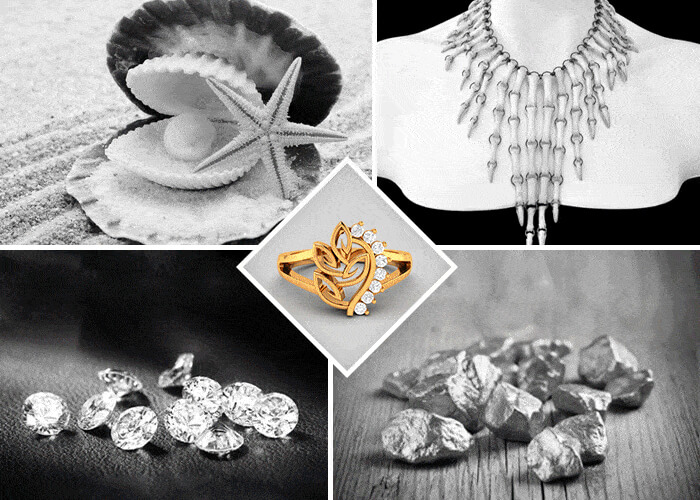
Human civilization has had a vast and varied history, but there have been a few factors that have been common across all people. The use and evolution of jewellery is perhaps one of the most visible and interesting factor across different civilizations around the globe.
While the exact origin of jewellery is yet to be traced, archaeological finds suggest that humans started wearing adornments much before they started clothing themselves. Almost every ancient civilization that has been discovered so far has had some or the other form or jewellery that has been unique to them. As humans have evolved and developed, so have their jewellery pieces as well as methods and styles of wearing their jewellery.
Interesting Trivia: The forms and types of jewellery have evolved and grown over the thousands of years. Yet, some of the earliest forms of jewellery – shells strung on tree bark rope or twine are still around and popular today as fashion and beach jewellery.
While the earliest forms of jewellery were nothing more than stones, sea-shells or animal bones strung together on plant twine, jewellery from then until now, has been a mark of status, stature and wealth in every culture. It is believed that jewellery was first worn nearly 100,000 years ago. Simple necklaces or charms made of sea-shells strung on bark rope or twine have been found buried with the remains of people from long lost civilizations. These finds have also been a proof that man’s love for jewellery started long before he understood the importance of wearing clothes.
As mankind progressed and civilizations moved inland from the sea coasts, minerals and metals were found. This also led to major changes in the kind and manner in which jewellery adorned the bodies of humans. The range of different ornaments being worn also increased. As men learnt how to work with metal, the simple trinkets and charms made of shells were replaced by varied adornments such as rings, necklaces, earrings , nose rings,bracelets, and other jewellery.
The use of jewellery also went through many changes. In some cultures, it became a form of currency, in others, an expression for artistic talents. When religion was found, specific ornaments became a symbol for certain religions.
Egypt and India are both credited with giving birth to modern jewellery. However, the art of metal working was first developed in Egypt. It was also the Egyptians that realized the value of gold, silver and other precious stones and started storing them as a form of wealth. Almost every Egyptian pharaoh that was buried had huge treasure hoards buried with him in the pyramid. Similarly, there have been innumerable stories of unspeakable treasures in the form of gold, silver and other ornaments being found from ancient Indian forts, temples, and palaces.
Once diamonds were discovered around 3000 years ago in India, these shiny rocks soon became major adornments for the wealthy. Over the course of time, the art and styles of jewellery kept undergoing changes. More and more types of jewellery items such as headgears in the form of crowns, bands and bracelets for the upper arms, as well as waist bands, and many other articles were introduced. After the Egyptians, it was the Romans and Greeks that took the jewellery tradition forward by bringing in further intricacy into their ornaments. Both these cultures utilized jewellery as an important form of trade and business. Then of course came the period when the true value of gemstones, including diamonds, was recognized, and precious jewellery took a permanent turn for the better. Studded diamonds and gem stones jewellery pieces in gold, silver and platinum were created, and arevery much in demand and use even today.
